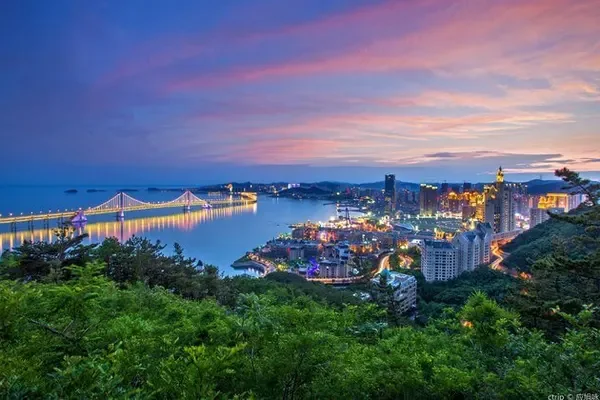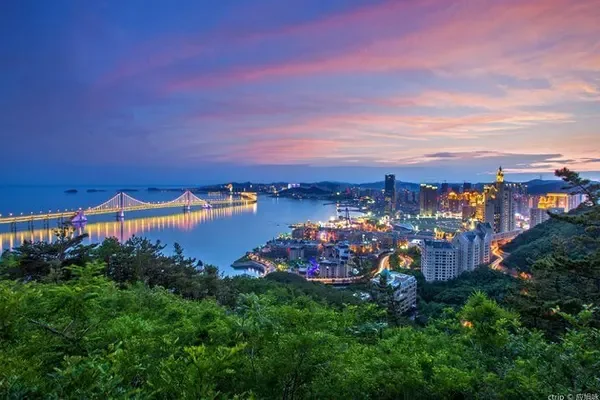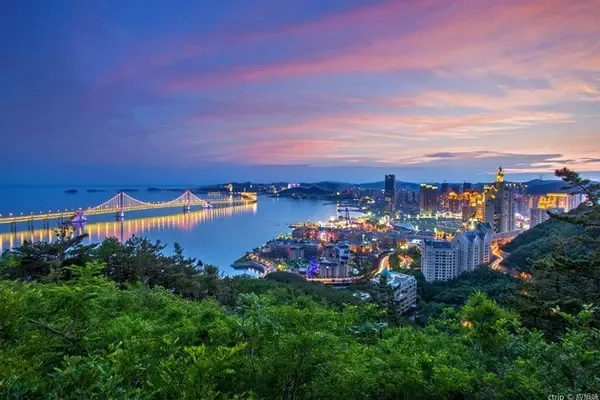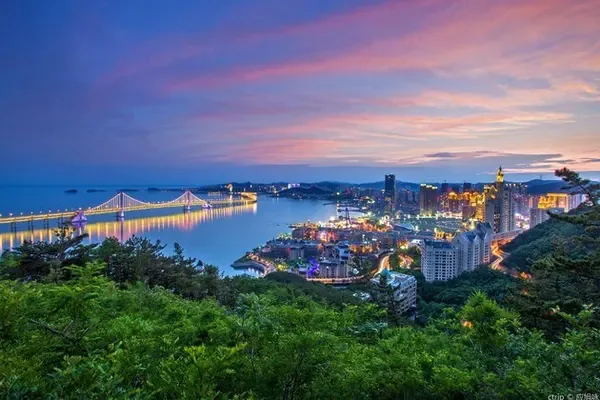During the 11th Golden Week, we embarked on a journey westward, with a total distance of 4,110 kilometers and a duration of 8 days.
D1. Xi'an-Xining, travel 880 kilometers, 11 hours, stay in Xining;
D2. Xining-Qilian-Zhangye, travel 520 kilometers, 10 hours, stay in Zhangye;
D3. Zhangye-Linze Danxia-Jiayuguan, a journey of 270 kilometers, 7 hours, stay in Jiayuguan;
D4. Jiayuguan-Dunhuang, travel 380 kilometers, 4 hours, stay in Dunhuang;
D5. Dunhuang-Yumenguan-Yadan Devil City, 180 kilometers, 5 hours, stay in Aksay;
D6. Aksay-Delingha, travel 500 kilometers, 6 hours, stay in Delingha;
D7. Delingha-Chaka Salt Lake-Xining, travel 500 kilometers, 6 hours, stay in Xining;
D8. Xining-Xi'an, 880 kilometers, 11 hours.

the next day
Attractions //Datong River-Jingyangling Pass-Lenglongling Gangshika Snow Peak-Menyuan Rapeseed Field-Arou Temple-Qilian Mountain Grassland//
[Qilian Mountains of Geography and Landform]
Qilian Mountain is one of the main mountain ranges in my country. It is composed of several parallel mountains and wide valleys running from northwest to southeast, with an average altitude of 4000-5000 meters. It is located on the border between the northeast of Qinghai Province and the west of Gansu Province, with towering snow-capped mountains, wide glaciers, and magnificent landforms.
Qilian Mountain is of great historical significance to our country, and it is the origin of the dream of a great power. Without Qilian Mountain, there would be no Hexi Corridor and no Silk Road; There are large differences in areas and other aspects, and it has become a number of important geographical dividing lines: the dividing line of the first and second ladders of terrain; the dividing line of 200 mm annual precipitation; the dividing line of the inner flow area and the outer flow area; ; the dividing line between Gansu Province and Qinghai Province; the dividing line between Northwest China and Qinghai-Tibet Region.
The towering mountains of Qilian Mountain block the southeast monsoon of the Pacific Ocean and isolate the desert of Inner Mongolia from the desert of the Qaidam Basin. The glaciers, rivers and oases formed nourish the Hexi Corridor, run through the Silk Road, attract religion, and send It is precisely because of the existence of the majestic Qilian Mountains and the birth of the Hexi Corridor that a profound cultural heritage has been deposited, and countless historical relics and historic sites have been brewed, making Qilian Mountains a combination of scenic beauty and humanistic beauty.
Starting from Xining all the way to the north, Mercedes-Benz on the most beautiful G227 national road, crossing the Daban Mountain (part of the Qilian Mountains).
People harvesting rapeseed at the foot of the mountain (9:50)


Meet the tributaries of the Yellow River ~ Datong River (10:20)



The idyllic scenery of the Datong River Basin

Standing at the pass of Jingyangling Mountain and looking at Lenglongling Gangshika Snow Peak in Qilian Mountains (13:30)





Standing on the viewing platform of Daban Mountain overlooking Menyuan Rapeseed Flower Field



The Arou Temple in Qilian County is said to have been the largest tent temple in the world~ Quiet, solemn and mysterious (14:45)





The Qilian Mountain grassland, rated as one of the six most beautiful grasslands in China by China National Geographic, is unique against the backdrop of snow-capped mountains (15:20)



third day
Attractions //Zhangye Danxia-Jiayuguan-The First Pier of the Great Wall//
【Zhangye Danxia】(9:00)
The Danxia landform is the product of the long-term movement of the earth's crust. It is formed by the accumulation of isolated peaks and steep rocks formed by red sandstone after long-term weathering, stripping and erosion by flowing water. Zhangye Danxia is located at the northern foot of Qilian Mountains. It developed in the Tertiary Jurassic period 2 million years ago. It is amazing with cross-bedding, steep walls, vertical joints and colorful colors. It is the largest and best-developed Danxia landform in China. It is one of the areas with the richest landforms and the only complex area of Danxia landforms and colorful hills in my country. She integrates the majesty, danger, strangeness, seclusion and beauty of Guangdong Danxia, and embraces the colorful colors of Xinjiang's colorful city. The landform is colorful, highly ornamental, and large in size, ranking first in the country. It was rated as one of the "6 most beautiful strange landforms in China" by the "China National Geographic Magazine", and it is known as "Zhangye Window Lattice Palace-style Danxia Landform China. The first", "Zhangye Colored Hills No. 1 in China", was rated as one of the "Top 10 Amazing Geographical Wonders of the World" by the National Geographic Magazine.






Zhang Yimou's "Three Shots Surprise" filming location












[Humanities and History of Jiayuguan] (16:40)
Jiayuguan is located in the western part of the Hexi Corridor. It has a history of more than 600 years. It is the first important pass and starting point at the western end of the Great Wall of the Ming Dynasty, and it is also a transportation fortress on the Silk Road. At present, it is the most well-preserved and most spectacular ancient military castle along the line, and has the reputation of "Xiongguan".



























[The first pier of the Great Wall of Humanity and History] (18:50)
"The first pier of the Great Wall" is the first pier of the Great Wall from west to east in the Ming Dynasty, and it is an important part of the defense system of the Jiayuguan Great Wall. It is 7.5 kilometers away from Guancheng in the north, and the pier stands on the 80-meter-high cliff beside the Kolai River. It can be called "the most dangerous pier in the world".


fourth day
Attractions //Mingsha Mountain/Crescent Lake//
Pass through Guazhou. Guazhou is affiliated to Jiuquan City, Gansu Province, and is located at the west end of the Hexi Corridor in Gansu Province. It has been a transportation hub from east to west since ancient times, and an important merchant town on the ancient Silk Road. Guazhou County is famous for its rich melons and fruits. It has been famous both at home and abroad for its rich "beautiful melons" since ancient times. The "Guazhou honeydew melons" produced have more than 30 varieties in 4 series. They are crisp and juicy, sweet and delicious, refreshing and pleasant. The sugar content reaches 14% to 19%, which is a good product for relieving summer heat and quenching thirst.



【Geography and Landform: Mingsha Mountain/Crescent Lake】(16:20)
Located seven kilometers south of Dunhuang City, Mingsha Mountain/Crescent Moon Spring is like a pair of twin sisters in the Gobi desert. The cause of such a strange landform is still inconclusive: one is the residual lake of ancient rivers; the other is fault seepage spring; the third is wind erosion of the lake;


Mingsha Mountain has undulating peaks and ridges like blades, just like a golden dragon lying on the ground. It is said that in midsummer, people ride quicksand, climb and row down, and the sand sounds like thunder.

















Surrounded by Mingsha Mountain, Crescent Lake looks like a crescent moon, nestling quietly against Mingsha Mountain, giving people the feeling of "Mingsha Mountain is pleasant, and Crescent Spring is refreshing".







fifth day
Attractions //Mogao Grottoes-Yumen Pass-Dunhuang Han Great Wall-Dunhuang Yadan//
【Humanities and History: Dunhuang Mogao Grottoes】(10:10)
Mogao Grottoes, commonly known as Thousand Buddha Caves, are located in Dunhuang at the western end of the Hexi Corridor. It was built in the pre-Qin period of the Sixteen Kingdoms. It is said that the first person who opened the cave was a monk named Le Zun. The Western Wei, Northern Wei, Sui, Tang, Five Dynasties, Song, Xixia, and Yuan lasted for thousands of years, forming a huge scale, with 735 caves, 45,000 square meters of murals, and 2,415 clay colored sculptures. It is the largest existing in the world. The most abundant Buddhist art site and the best preserved Buddhist grotto art treasure house is one of the four major grottoes in China (Dunhuang Mogao Grottoes, Luoyang Longmen Grottoes, Datong Yungang Grottoes, Maijishan Grottoes). It was included in "World Heritage List" by UNESCO in 1987.










[The Yumen Pass of Humanities and History] (13:38)
"The Yellow River is far above the white clouds, an isolated city of Wanren Mountain. Why should the Qiang flute complain about the willows, and the spring breeze does not pass Yumen Pass." A well-known "Liangzhou Ci" by Wang Zhihuan, a poet of the Tang Dynasty, aroused our interest in going to Yumen Pass, and drove nearly 100 kilometers across the Gobi to visit this ancient pass.
The Yumenguan site is located at the westernmost end of the Hexi Corridor, on the south bank of the Shule River, about 90 kilometers away from the downtown area of Dunhuang, and about 150 kilometers west of the eastern edge of Lop Nur, in the natural geographical environment of Gobi, desert, rivers and lake beaches.




Yumen Pass is also called Xiaofangpan City. After Zhang Qian's mission to the Western Regions, the Silk Road was opened, and the cultural and trade exchanges between the East and the West became more and more prosperous. In order to ensure the smooth flow of the Silk Road, Emperor Wu of the Han Dynasty ordered the construction of Yangguan and Yumenguan.
Yumen Pass is the throat of the Silk Road leading to the Northern Road of the Western Regions. At that time, Yumen Pass was full of camel bells, people screaming, caravans came and went, and envoys came and went. It was a prosperous scene. Now when you climb up to the Guguan Observation Deck, you can see marshes all over the place, ravines and ravines, the Great Wall broken walls are faintly visible, beacon towers stand tall, Populus euphratica is tall and straight, and the eyes are full of desolation... "The spring breeze does not pass Yumen Pass" is the realistic portrayal of today's Guguan.





[Humanities and History of Dunhuang Han Great Wall] (14:15)
The Great Wall of Han Dynasty is a great creation of the working people in ancient China. As early as the Western Han Dynasty, in order to resist the harassment of the Xiongnu, the Central Plains Dynasty strengthened frontier control, stabilized the people internally, consolidated the centralization of power, and ensured the smooth flow of the Silk Road. Zhangye, Ejina Banner, Jinta, Jiayuguan, Yumen The world-famous Great Wall of the Han Dynasty was built nearly 1,000 kilometers from Anxi, Anxi to Dunhuang, and the "Ting" (beacon tunnel), "Barrier" (larger castle and beacon tower) was built to Yanze (now Lop Nur) Loulan ancient country. The existing trunk and branch lines of the Great Wall of the Han Dynasty in Dunhuang are hundreds of miles away. Although they have experienced two thousand years of wind, sand, snow and rain, some sections are still solid as rocks, standing in the Gobi Desert. With the passage of time, most of the Great Wall has been razed to the ground, but Traces still exist, and some parts are relatively complete.






[Dunhuang Yadan of Geography and Landforms] (15:20)
Yadan landform is a unique landform formed by wind erosion, also known as "wind erosion ridge". Some dry river bottoms in extremely arid areas are often cracked due to drying up, and the wind blows along the cracks, and the cracks are getting bigger and bigger, so that the original flat ground develops into many irregular crucian carp crucian carp ridges and wide shallow grooves. This kind of fragmented ground is called Yardang landform.
Dunhuang Yadan National Geological Park, commonly known as Dunhuang Yadan Devil City, is an important part of the Dunhuang West Tourist Scenic Spot. It is 168 kilometers away from Dunhuang City and is located in the northwest of Yumenguan. , about 13 kilometers wide from north to south.
With its unique desert scenery, various geological wonders and ancient folklore, Dunhuang Yadan National Geopark has attracted countless brave explorers to explore the mysteries of nature. Dan named the National Geopark.



Dunhuang Yardang is located at the junction of Xinjiang and Gansu, and is part of the ancient Lop Nur. She is currently the largest Yardang landform community in Asia, with the most mature topography and geology, and the most ornamental value. Her soil is hard and light red, which forms a strong contrast with the blue Gobi Desert; her shapes are rich and varied, like pagodas, palaces, golden peacocks, golden lions, fleets... lifelike. It is said that when encountering wind and sand, the whole Yadan is full of ghostly sounds, and the night walk cannot turn around, so the locals commonly call it "Devil City".






























It was getting dark, and when you came out of the Yadan Geopark, you could only see stars in the endless Gobi. There were no street lights, and the endless car taillights on the way forward looked like a huge fire dragon stretching far. The driver can only follow the rut of the vehicle in front, rely on the high beam to illuminate, and drive slowly, one after another.
sixth day
Attractions //Talian Lake-Delingha Alien Site//
I ate a bowl of beef noodles in Aksay (Kazakh Autonomous County) early in the morning, and started another day's itinerary.
Aksay Hotel (8:30)

Aksay-Talian Lake road shoot




Crossing a high-altitude pass in the Qilian Mountains, God let us experience a snowstorm that we have never experienced in our life (12:15)










"Alien Ruins & Talian Lake Scenic Spot" Road Shoot












[Talian Lake of Geography and Landform] (14:30)
In the northeast of the Qaidam Basin, there are two beautiful and quiet lakes, one large and one small, on the Huaitou Tala Grassland. They are salty and fresh, and the waters are connected. They are like huge shining mirrors inlaid on the vast Gobi and vast grasslands. They are Tuosu, located in Dehaling City, Haixi Mongolian and Tibetan Autonomous Prefecture, at an altitude of 3,000 meters. Lake and Crook Lake, collectively referred to as Talian Lake. Tuosu Lake is a typical inland saltwater lake with a vast surface and open shore; Keluke Lake is a brackish freshwater lake with clear water and calm surface. They are just like a pair of lovers in the legend, one strong and one soft, clinging to each other.
Tosu Lake








Gentle and beautiful Keluke Lake










【Human Mystery: Delingha Alien Ruins】(15:50)
I don't know when a giant "desert circle" appeared overnight near the "alien site" in Delingha, Qinghai. Human ruins" added the color of "seemingly real". Humans have to associate this area with aliens.
The "Delingha Alien Site", which was famous in the 1970s, is located in Baigong Mountain on the south bank of Tuosu Lake. From a distance, it looks like a pyramid. In the three caves on the front of the mountain, there are many rust-red pipes that seem to be inserted straight into the rock. There are a large number of rusty iron-like fragments and strange-shaped stones scattered around the lake and caves, and some pipelines extend into Tosu Lake. After sampling and analysis by scientists, it was found that iron oxide accounted for more than 60% of the composition of these tubes, while more than 8% of the elements were not in the periodic table. People speculate that these mysterious elements may come from extraterrestrials, from the deep sea, or from the center of the earth...It may be the function of these mysterious elements that allow the tube to be inserted into the hard rock without deformation.
So far, the mystery of the "Delingha Alien Site" still plagues mankind: Where did the tube come from? How did the tube get inserted into the rock? What is the mysterious element of the tube?








Talian Lake - Delingha road shoot



seventh day
Attractions //Chaka Salt Lake//
Delingha-Chaka Salt Lake Road Shooting




Qinghai-Tibet Railway



【Geography and Landform: Chaka Salt Lake】(13:00)
The Qinghai-Tibet Plateau was originally a vast ocean. The long-term crustal movement lifted the ground to form a plateau, and the seawater left in the low-lying areas formed a salt lake.
Chaka Salt Lake is located at the east gate of the Qaidam Basin, with an altitude of 3,100 meters. It is the only natural salt lake on the golden dimension line at 37 degrees north latitude. It has a long-standing reputation for producing "Daqing Salt". Different from other salt lakes, it is a brine lake with both solid and liquid, inlaid in the snow-capped mountains and grasslands instead of the Gobi Desert, which is very ornamental. Salt Lake has a wide water area, blue sky, white clouds, and snow-capped mountains reflected in the lake. It is picturesque and enjoys the reputation of "China's skyland". It was rated as one of the 55 must-see places in life by National Geographic.
Salt sculpture



salt pinch critters

"The Realm of the Sky"






salt lake salt



The railway and small train stretching to the center of the lake




After the tour of Chaka Salt Lake, we went straight to Xining. Our car made a perfect circle on the "Westbound Route Map".
This self-driving loop starts in Xining, crosses the Qilian Mountains, goes west along the Hexi Corridor on the north side, stops at the ancient Lop Nur Dunhuang Yadan, and then along the Qaidam Basin, goes eastward from the Qinghai-Tibet Plateau on the south side of the Qilian Mountains, and circles the Qilian Mountains. Passing through three provinces (Shaanxi, Gansu, Qinghai), four ethnic groups (Han, Hui, Kazak, Mongolian), visited more than a dozen scenic spots. Along the way, we watched various natural landscapes containing profound scientific mysteries; browsed many cultural and historical sites with rich cultural backgrounds. Traveling is a process and a discovery. It is through travel that we discover, appreciate, learn, and comprehend.
end



